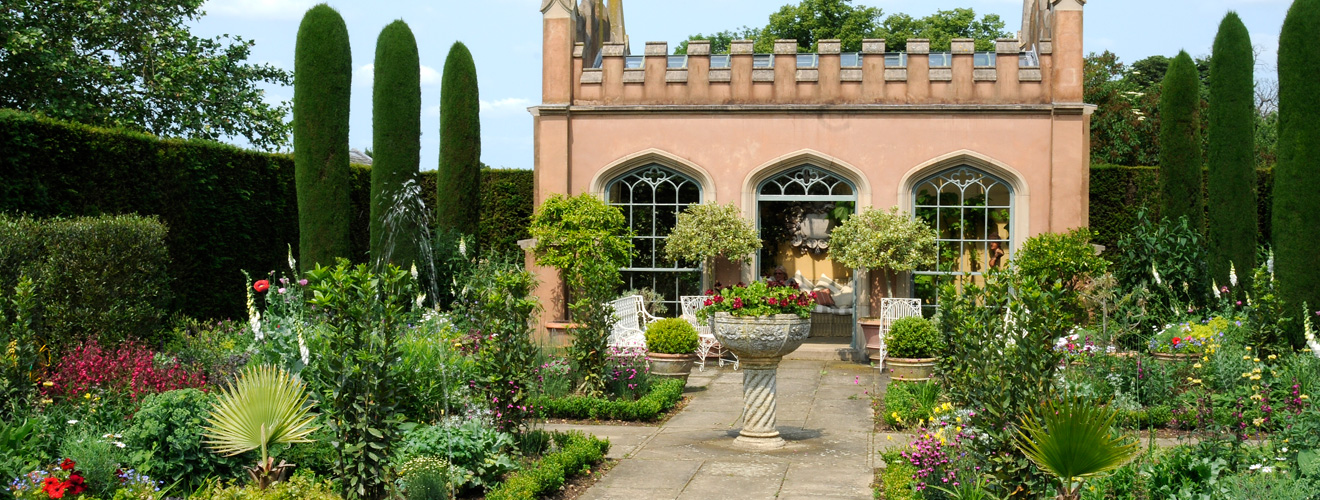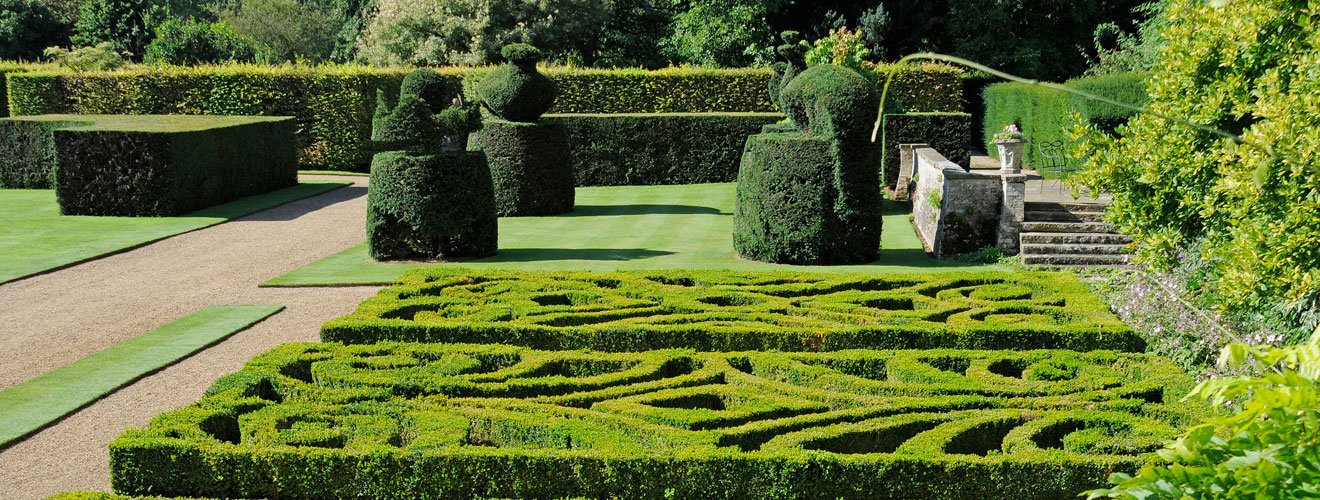The Garden
Historic Houses Garden of the Year Judges’ Choice Award winner 2021
The gardens you see today are the work of Meredyth Proby, who spent the last forty years re-designing and re-planting them. They provide a stunning backdrop to the house and contain many unusual plants and shrubs. Prints on display in the house show how Sir Thomas Proby first laid out his garden in the 1670’s and how it developed during the 18th and 19th century. The present gardens are based on a design made in 1911 by A.H. Hallam Murray, father-in-law to Sir Richard Proby (d.1979). They were originally designed for fourteen gardeners and included the large Walled Garden which is now a Plant Centre. When Sir William & Lady Proby lived at the Hall from 1980 – 2021 the gardens had to be greatly reduced and restored. Although the garden is smaller, the new extensive hedging and topiary have created different areas and structure throughout the year which provide a perfect backdrop for the more intensive planting.
The Lily Pond
…was part of the original design by Hallam Murray. It used to be planted with bedding out such as ageratums and salvias. It has now been enlarged and surrounded by a low wall and generously planted with many herbaceous perennials and small shrubs. Crisply cut topiary of the family dog, the crest and peacocks frame the house. Half of them are recent additions and they help to balance the setting of the house between the parterre, lawns and paths.
The Flower Garden
…was originally the Edwardian Rose Garden. When we arrived in 1980, this was in a poor state of repair. Three years later we asked Peter Beales to help us replant the garden. At the same time we started to plant the hornbeam and yew hedging to create gardens within gardens. Dutch Elm disease in the 1970’s had meant that many fine specimens from the park and gardens had been lost. We felt that it was necessary to create some structure to the very flat space we had inherited. For twenty years, the new Rose Garden looked magnificent, but it gradually became apparent that inherent rose sickness in the soil meant we had to think again. The stunning Flower Garden, fountain and Wisteria Walk are the result of those thoughts.
The Orangery Garden and Orangery
…were created to celebrate the Millenium. The building was designed to reflect the Gothic façade of the South Front. The small gardens are surrounded by tall yew hedges, which once enclosed a Bowling Green before the First World War. These are sumptuously planted with Mediterranean species and oranges and lemons in terracotta pots. Nearby is the Shell Arbour, built to celebrate the Jubilee and decorated by Charlotte Kerr Wilson.
Topiary and the Shrub Garden
Elton Hall has some magnificent topiary that has been created over the last 30 years. The Shrub Garden was designed to provide some shade and a cool green space between the other gardens. Originally there were three large elms in this space, all of which had died by 1980. Paeonia suffruticosa, Paulownia tormentosa, Tilia cordata, and a large Juglans regia now give welcome respite from the heat of the sun on a warm summer’s day.




